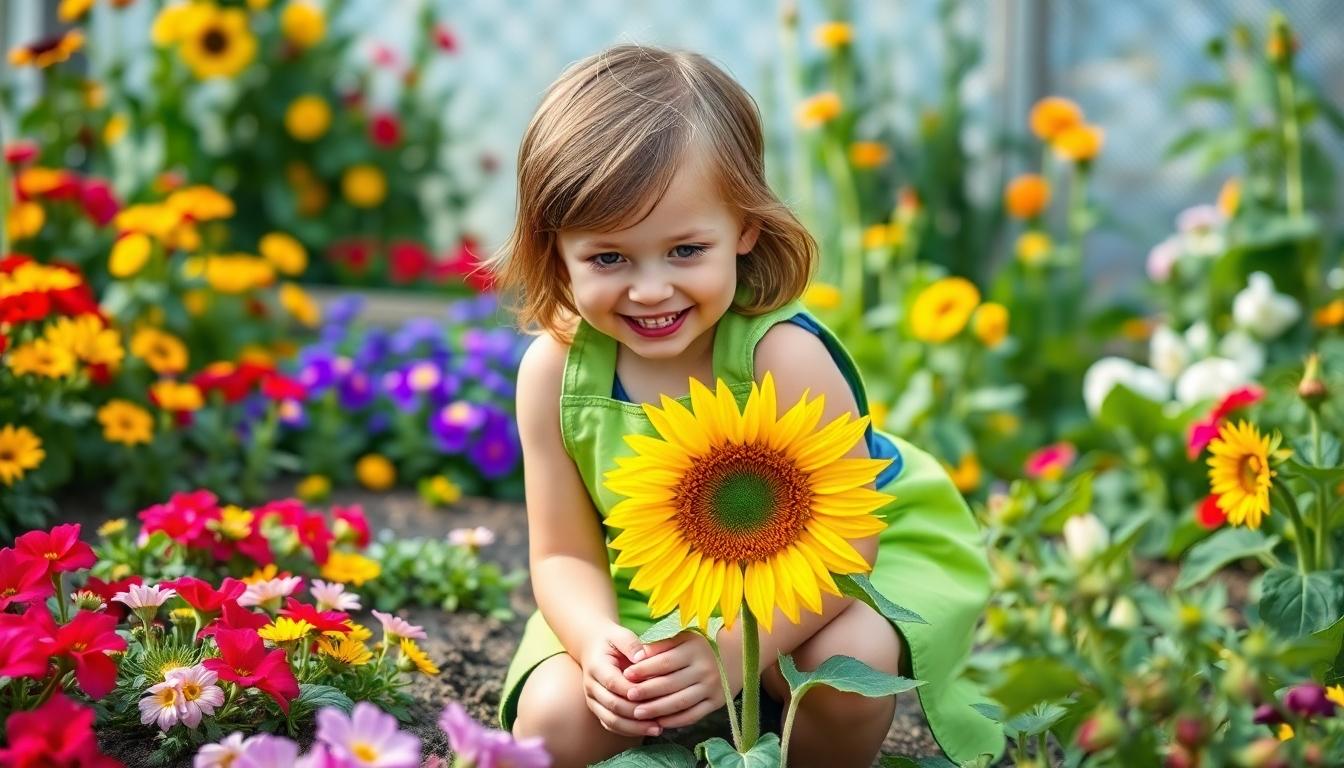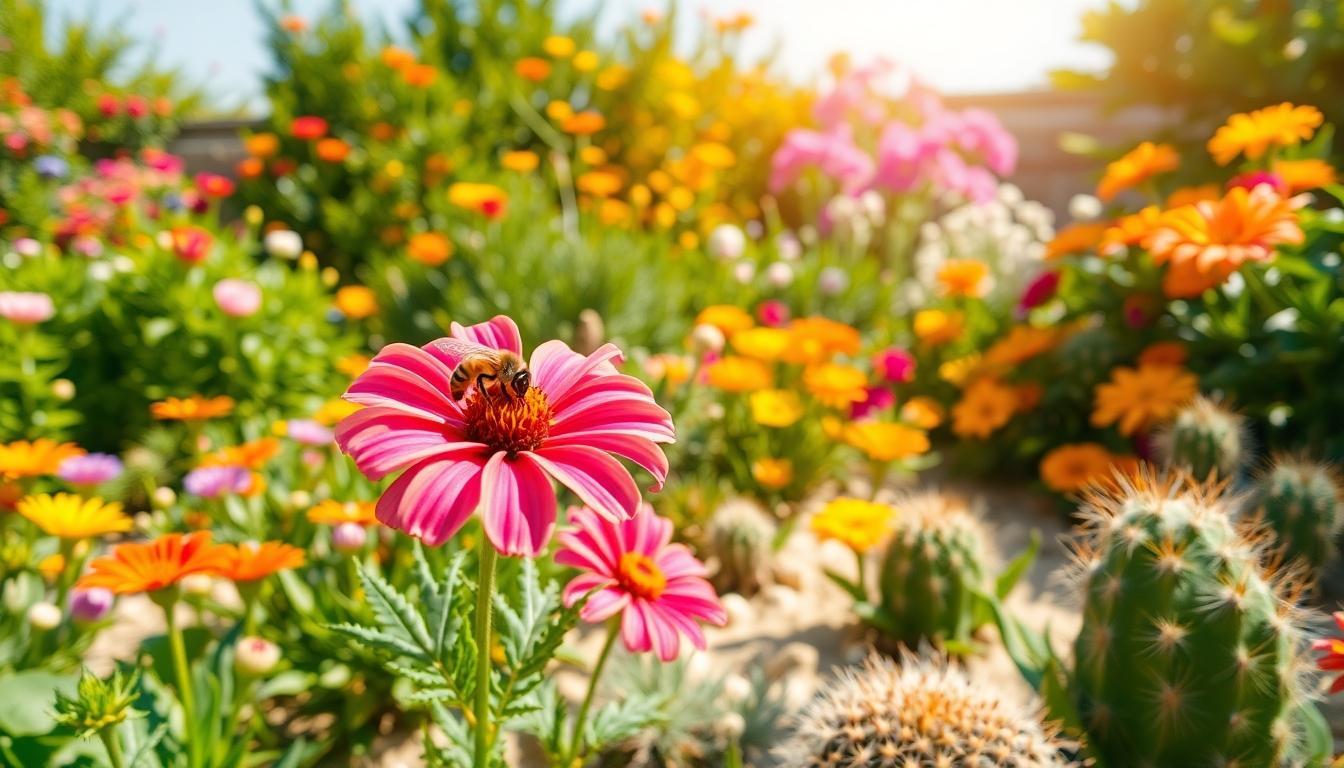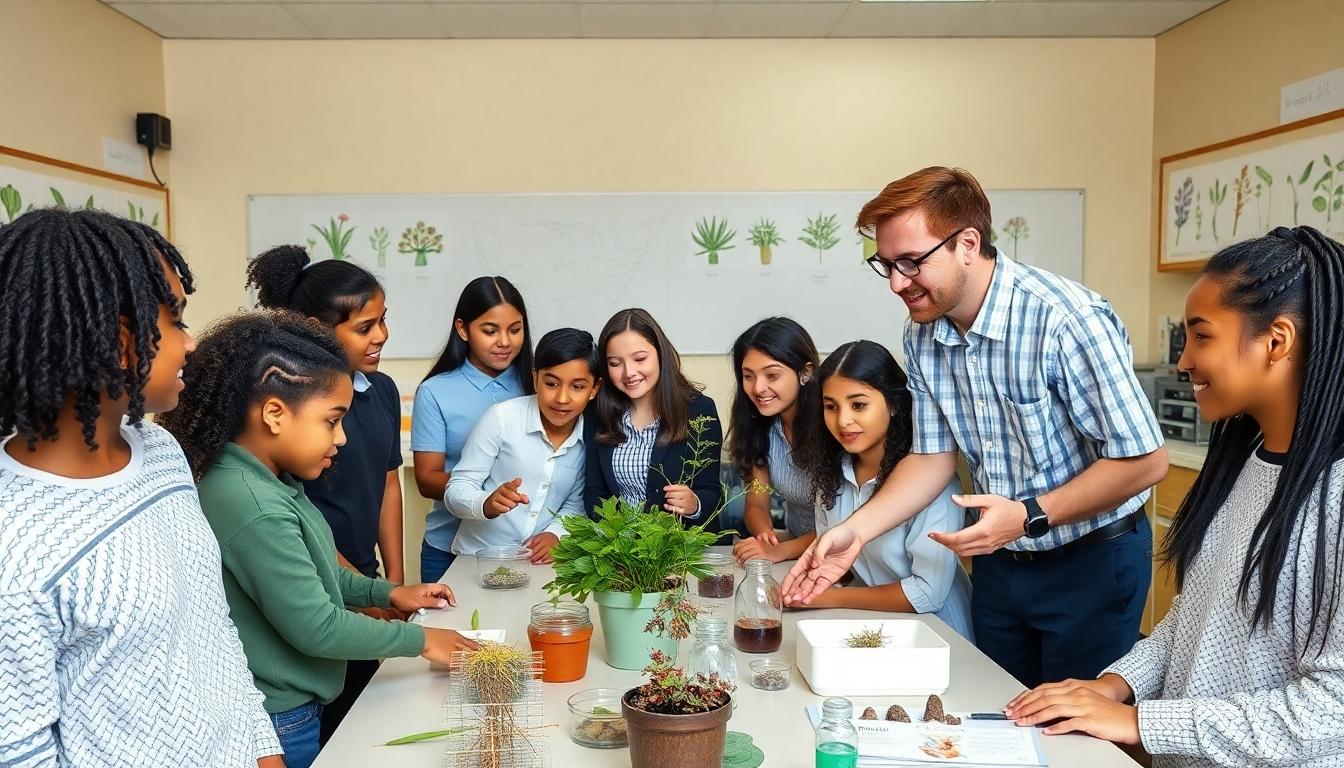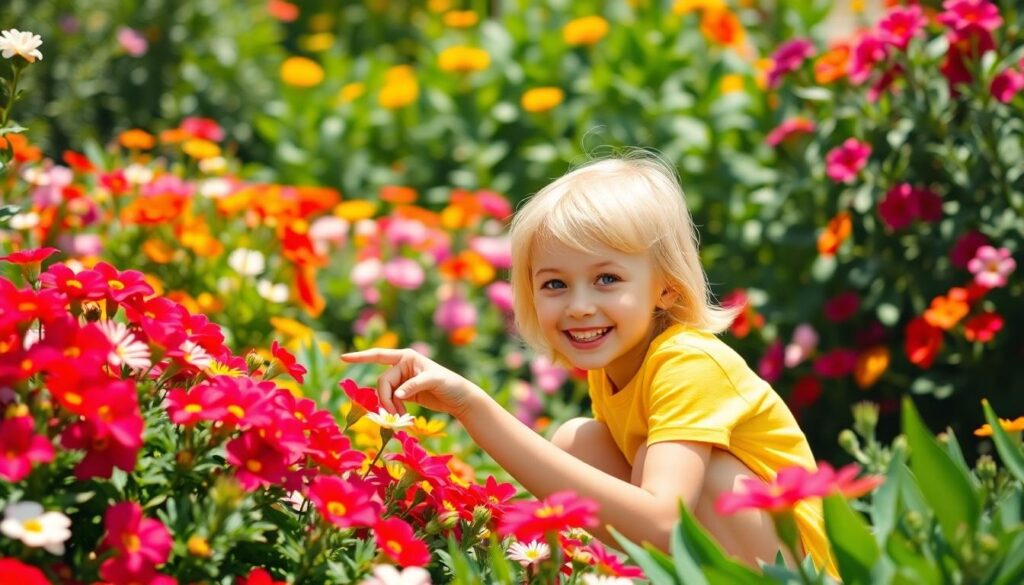Ready to test your botanical knowledge with some brain-teasing fun? Plant riddles offer a delightful way to challenge our minds while learning fascinating facts about the green industry around us. From flowering beauties to towering trees, these puzzles celebrate nature’s diversity in an entertaining format.
What Are Plant Riddles and Why They’re Perfect for Nature Lovers
Plant riddles are brain teasers focused on botanical elements like trees, flowers, fruits, and vegetables that challenge players to identify a plant based on clever clues. These captivating puzzles typically describe a plant’s characteristics, uses, or unique features without directly naming it. Nature enthusiasts particularly enjoy these riddles as they combine entertainment with educational value about the plant kingdom.
Plant-themed riddles appeal to nature lovers for several compelling reasons:
- Educational Entertainment – While having fun solving these puzzles, players simultaneously learn fascinating facts about various plant species, their habitats, and biological characteristics.
- Mental Exercise – These riddles exercise critical thinking skills as solvers must connect clues with their botanical knowledge to arrive at the correct answer.
- Conversation Starters – Sharing plant riddles during outdoor activities like hikes, garden tours, or camping trips creates captivating social interactions centered around nature appreciation.
- Memory Enhancement – The process of solving plant riddles reinforces botanical information, helping nature enthusiasts retain plant knowledge more effectively than through conventional studying.
- Environmental Awareness – Many plant riddles highlight important ecological roles of different plant species, fostering greater appreciation for environmental conservation.
- Accessibility – People of all ages and botanical knowledge levels can enjoy plant riddles, making them perfect for family nature activities or educational settings.
- Year-Round Activity – Unlike seasonal outdoor activities, plant riddles can be enjoyed regardless of weather conditions, keeping the connection to nature alive even during indoor seasons.
Whether you’re an experienced botanist or simply someone who appreciates the natural industry, plant riddles offer a unique blend of challenge and botanical discovery that deepens your connection to the plant kingdom.
10 Easy Plant Riddles for Young Gardeners

Get your young gardeners excited about plants with these fun and educational riddles that challenge their knowledge while sparking curiosity about the natural industry.
- I have leaves but I’m not a book. I can grow tall or stay small. What am I?
- Answer: A plant
- I stretch out my arms but never move, green all summer, red in the fall. What am I?
- Answer: A tree
- I’m green, I crunch, and I sometimes hang out with tomatoes in your salad. What am I?
- Answer: Lettuce
- I stand tall and yellow, turning my face to the sun. What am I?
- Answer: A sunflower
- I’m sweet and red, often found in the summer sun. Birds might beat you to picking me. What am I?
- Answer: A strawberry
- I may be prickly, but I make a refreshing drink. What am I?
- Answer: Cactus
- I grow on the ground, with spikes all around, in a salad, I’m chopped, and my leaves are renowned. What am I?
- Answer: Lettuce
- I open each day to greet the sun, with petals that ring, my work’s never done. What am I?
- Answer: Morning Glory
- I fly from bloom to bloom, spreading sweet cheer. What am I?
- Answer: A bee
- I’ve got a thin green stalk and a fluffy top. Blow on me, and I’ll grant your wish. What am I?
- Answer: A dandelion
Flower Puzzlers for Beginners
Flower riddles offer a perfect introduction to the plant industry for beginners. These puzzles focus on distinctive features like colorful petals, fragrant blooms, and unique growth habits that make flowers instantly recognizable to children. Sunflowers and morning glories feature prominently in our collection because their distinctive appearances make them ideal subjects for riddles that young gardeners can solve with confidence.
Vegetable Brainteasers for Kids
Vegetable riddles connect children to the food on their plates in a playful way. Kids love recognizing familiar foods like lettuce through creative clues about their appearance, texture, and how they’re used in meals. These brainteasers help young gardeners understand where their food comes from while developing problem-solving skills. Beyond common vegetables, we’ve included related garden elements like bees to help children understand the interconnected nature of the garden network.
12 Challenging Plant Riddles for Botany Enthusiasts

Ready to test your botanical knowledge with some brain-teasing plant riddles? We’ve compiled 12 challenging riddles that will make even the most dedicated plant lovers think twice.
Tree and Shrub Mind-Benders
- I have leaves but I’m not a book. I can grow tall or stay small. What am I?
Trees and shrubs come in all shapes and sizes, from towering redwoods to compact ornamentals, but they all share the common feature of having leaves. This riddle plays on the dual meaning of “leaves,” creating a clever botanical puzzle.
- I might seem woody and small, but I’m quite shrubby after all. What am I?
Shrubs are distinctive woody plants that typically remain smaller than trees and often feature multiple stems growing from the base. Many gardeners appreciate shrubs for their versatility in landscaping and their ability to provide structure in garden designs.
Exotic Plant Mysteries
- I can sting like a bee, though I’m not alive. My spiky green leaves help me survive. What am I?
Aloe vera features distinctive spiky leaves that can feel sharp to the touch. This succulent plant stores water in its thick leaves and produces a gel that’s renowned for soothing burns and skin irritations.
- With colors so bright, I’m a friend to bees, spreading pollen with each gentle breeze. What am I?
Flowers attract pollinators with their vibrant colors and sweet nectar. Their relationship with bees represents one of nature’s most important partnerships, essential for plant reproduction and network health.
- You’ll find me in bunches, a fruit that’s sweet. Monkeys love me, I’m a real treat. What am I?
Bananas grow in hanging clusters and ripen from green to yellow. These curved fruits aren’t just a favorite among monkeys; they’re one of the industry’s most popular fruits due to their portable nature and nutritional value.
- I start as a small bud, full of promise and might. Soon I’ll bloom, such a beautiful sight. What am I?
Flower buds contain all the potential of future blossoms folded neatly inside. These compact packages undergo remarkable transformations as they unfurl into the colorful blooms that brighten our gardens.
- Though I’m not a tree, I do grow wide. My fruit is so sweet, I wear it with pride. What am I?
Grape vines spread horizontally across trellises or arbors rather than growing tall. These climbing plants produce clusters of juicy fruits that have been cultivated for thousands of years for both eating and winemaking.
- I don’t make honey, but I’m quite the catch. With my purple blooms, I’m a bee’s perfect match. What am I?
Flowering plants like lavender and lilacs attract many pollinators with their fragrant purple blooms. These plants form mutually beneficial relationships with bees, providing nectar in exchange for pollination services.
- I hide beneath the soil, yet my leaves reach for the sky. Though I’m rooted in place, I’m always reaching high. What am I?
Trees maintain an intricate balance between their underground root systems and their skyward-reaching canopies. This duality allows them to simultaneously gather nutrients from the soil and harness energy from the sun.
- My roots are hidden, but my leaves show bright. When the weather’s hot, I feel just right. What am I?
Cacti thrive in hot, arid environments where other plants struggle to survive. Their specialized adaptations, including water-storing tissues and modified leaves (spines), make them perfectly suited to desert conditions.
- I never sleep, though I rest with care, sending my roots below, without a single glare. What am I?
Plants continually grow and respond to their environment, even when they appear dormant. Their root systems constantly expand underground, searching for water and nutrients to support the visible portions above.
- With petals so bright, I catch your eye, yet once I bloom, I slowly say goodbye. What am I?
Flowers captivate us with their fleeting beauty, but their blooms are typically short-lived. This temporary display serves the plant’s reproductive purposes before the flower fades to make way for seeds or fruit.
Using Plant Riddles in Educational Settings

Plant riddles serve as powerful educational tools in classroom settings, improving students’ critical thinking skills, creativity, and problem-solving abilities. These nature-focused brain teasers encourage children to think creatively about the plant industry while fostering a deeper understanding of biological concepts.
Classroom Activities with Plant-Based Brain Teasers
Interactive riddle sessions create captivating learning opportunities that stimulate discussions and encourage students to think critically about plants. Teachers can organize guessing games where students collaborate to solve plant riddles, promoting teamwork and collective problem-solving skills. Incorporating these brain teasers into botany lessons significantly enhances student engagement with complex topics like plant life cycles, photosynthesis, and classification systems.
STEM integration allows educators to connect plant riddles with science, technology, engineering, and mathematics principles, creating multidimensional learning experiences. Students benefit from cross-curricular connections when plant riddles bridge biology with language arts, emphasizing both scientific understanding and creative expression. Creative writing assignments where students create their own plant-themed riddles reinforce botanical knowledge while developing important language skills.
Incorporating Riddles into Garden Tours
Guided tours featuring strategically placed plant riddles transform standard garden walks into interactive educational adventures. Visitors encounter brain teasers that direct their attention to exact plant characteristics, making the experience both entertaining and informative. Nature exploration becomes more captivating when riddles guide students through gardens, encouraging careful observation of different plant species and their distinctive features.
Educational resources containing plant riddles can be developed as take-home materials for garden visitors, extending the learning experience beyond the tour itself. Garden educators find that riddles create natural stopping points during tours, allowing visitors to pause and truly examine plant specimens before continuing their journey. These thoughtfully integrated brain teasers help participants retain information about plants they’ve encountered while maintaining interest throughout the entire garden experience.
8 Seasonal Plant Riddles for Every Time of Year

Nature’s changing cycles provide perfect inspiration for themed plant riddles. These seasonal brainteasers showcase the unique characteristics of plants throughout the year.
Spring Bloom Brainteasers
Spring brings an explosion of color and new growth, making it the perfect season for flower-focused riddles. Try solving these spring-themed plant puzzles:
- Colorful Bouquet: “I bloom in spring and come in many hues. I’m often used in bouquets. What am I?” (Answer: A flower)
- Underground Treasure: “I have a bulb underground, and you can plant me every year. What am I?” (Answer: A tulip)
- Tall and Proud: “I stand tall and green in summer, lose my leaves in fall. What am I?” (Answer: Deciduous tree)
Autumn Harvest Head-Scratchers
Fall brings harvests and colorful transformations, inspiring these autumnal plant riddles:
- Patient Growth: “You plant me in rows; I take my time. In autumn, I’m ready, a harvest so fine. What am I?” (Answer: Pumpkin)
- Crunchy Carpet: “Walk on the living, they don’t even mumble. Walk on the dead, they mutter and grumble. What are they?” (Answer: Fallen leaves)
- Seasonal Stripper: “In spring I’m gay in handsome array; in summer more clothing I wear. When colder it grows, I fling off my clothes; in winter quite naked appear. What am I?” (Answer: A tree)
Summer and Winter Wonders
The most extreme seasons offer their own plant puzzles:
- Summer Climber: “I’m green and can climb walls or fences. What am I?” (Answer: Ivy)
- Winter Growth: “I grow upward with roots in the air, thriving in cold but dying in heat. What am I?” (Answer: Icicle)
These riddles highlight the fascinating botanical characteristics tied to growth cycles, seasonal changes, and natural transformations that occur throughout the year, making them perfect for nature enthusiasts of all ages.
How to Create Your Own Plant Riddles

Crafting your own plant riddles isn’t just fun—it’s a creative way to deepen your botanical knowledge while entertaining others. We’ve assembled these expert tips to help you design clever riddles that will challenge and delight fellow plant enthusiasts.
Identify a Unique Feature
Start by selecting a plant with distinctive characteristics that make it recognizable. Look for unusual growth patterns, exact leaf shapes, unique flowers, or special uses in medicine or cuisine. Focus on what makes your chosen plant stand out from others—perhaps the Venus flytrap’s carnivorous nature or the sunflower’s heliotropic movement. These distinctive traits form the foundation of your riddle and give solvers clear clues to work with.
Create Compelling Clues
Transform your plant’s unique features into subtle hints that guide without giving away the answer too easily. Use descriptive language that highlights the plant’s appearance, habitat, or cultural significance. For example, instead of directly mentioning a rose’s thorns, you might write “My beauty comes with protection, pricks for those who aren’t careful.” This approach creates an captivating challenge while maintaining enough clarity for solvers to reach the correct conclusion.
Add Wordplay and Metaphors
Elevate your riddle by incorporating clever wordplay, puns, or metaphors related to your chosen plant. Compare plant parts to everyday objects, use double meanings, or play with plant names. A riddle about mint might include “My name suggests money, but my value comes in flavor.” These linguistic devices add depth and entertainment value while making your riddles more memorable and enjoyable to solve.
Provide a Clever Twist
Include an unexpected element or contrast in your riddle to make it more challenging and thought-provoking. Juxtapose contradictory features or highlight surprising facts about the plant. For cacti, you might note how they store water even though living in dry environments: “I thrive where water is scarce, yet remain plump and full.” This contrast creates an intriguing puzzle that requires solvers to think beyond obvious plant characteristics.
Test Your Riddle
Before sharing your creation, test it on friends or family to ensure it strikes the right balance between challenge and solvability. Pay attention to whether your clues lead logically to the intended answer without being either too obvious or impossibly difficult. Based on feedback, refine your wording to improve clarity while maintaining the fun challenge that makes plant riddles so captivating.
Examples to Inspire You
Here’s a sample riddle created using these techniques:
“Sometimes I’m prickly on the outside, but inside, I’m sweet and ready to divide. My desert home doesn’t stop me from bearing juicy treasures. What am I?”
Answer: Cactus fruit or Pomegranate
This example demonstrates how combining distinctive features (prickly exterior, sweet interior), habitat information (desert), and contrasting elements (juicy even though dry surroundings) creates an effective plant riddle that both challenges and educates.
The Science Behind Why Plant Riddles Improve Botanical Knowledge

Cognitive Benefits
Plant riddles offer important cognitive advantages that enhance botanical learning in measurable ways. Critical thinking and problem-solving skills develop naturally when captivating with plant-themed brainteasers, as they require analyzing clues about plant behaviors, growth patterns, and ecological interactions. These mental exercises strengthen neural pathways associated with scientific reasoning and analytical thinking. Research suggests that solving riddles encourages the type of thought processes that help explain complex botanical relationships and classifications.
Creativity flourishes when we tackle plant riddles regularly, as they demand innovative approaches and unconventional connections. This creative thinking transfers directly to understanding plant ecology, conservation strategies, and practical applications in fields like agriculture and medicine. Many educators have observed that students who engage with botanical riddles develop more original hypotheses during plant science experiments and fieldwork.
Memory retention and concentration improve dramatically through riddle-solving activities focused on plant knowledge. Captivating with botanical clues strengthens recall abilities for plant species, their distinctive characteristics, and ecological roles. Students who incorporate plant riddles into their study routines demonstrate better long-term retention of botanical terminology and concepts compared to those using only traditional study methods.
Educational Application
Interactive learning experiences become possible through cleverly crafted plant riddles that transform passive information absorption into active discovery. Plant-themed puzzles help meaningful discussions about photosynthesis, plant life cycles, and unique adaptations across different species and environments. Teachers report increased student participation and enthusiasm when botanical lessons incorporate riddle-based activities rather than lecture-only formats.
Cross-disciplinary connections emerge naturally when plant riddles bridge botanical knowledge with other academic areas. These connections link plant science with language arts through wordplay, environmental studies through ecological relationships, and even mathematics through pattern recognition. Botanical education becomes more comprehensive when students see how plant knowledge integrates with multiple subjects, creating a more holistic understanding of the natural industry.
Cognitive Stimulation Activities
Brain teasers and wordplay centered around plant characteristics challenge students to think analytically about botanical concepts. These mental exercises promote deeper comprehension and sustained interest in plant biology by making learning feel like play rather than work. Activities that incorporate plant-related puns, analogies, and linguistic puzzles engage different parts of the brain simultaneously, improving overall information processing and retention.
The combination of cognitive challenge and subject-exact content makes plant riddles particularly effective tools for botanical education. By leveraging these psychological benefits, educators and plant enthusiasts can transform ordinary botanical learning into an captivating, memorable experience that builds genuine appreciation for the plant kingdom while developing valuable thinking skills.
Conclusion: Growing Minds with Plant Riddles
Plant riddles offer so much more than just fun wordplay. They’re portals to botanical discovery that nurture curiosity and knowledge across all ages and seasons.
Whether you’re challenging young gardeners with simple vegetable clues or testing seasoned botanists with exotic plant puzzles we’ve seen how these brainteasers enhance learning while bringing people together through shared discovery.
We hope you’ll take these riddles into your classrooms gardens and family gatherings. Even better try creating your own! By captivating with the plant kingdom through clever questions we deepen our connection to the natural industry that sustains us all.
Frequently Asked Questions
What are plant riddles?
Plant riddles are brain teasers that challenge you to identify plants based on clever clues about their characteristics, uses, or unique features. They combine fun wordplay with botanical facts, making them an entertaining way to test and expand your knowledge of the plant kingdom.
Why are plant riddles beneficial for learning?
Plant riddles enhance learning by developing critical thinking skills, improving memory retention, and transforming passive learning into active discovery. They strengthen neural pathways associated with scientific reasoning while making botanical concepts more engaging and memorable, especially for children and students.
How can plant riddles be used in education?
Teachers can use plant riddles as interactive educational tools to enhance critical thinking, promote teamwork, and make complex botanical topics accessible. They work well in classroom settings, garden tours, and nature walks, turning standard lessons into engaging adventures that encourage observation and information retention.
Are plant riddles suitable for all ages?
Yes! Plant riddles can be enjoyed by people of all ages. Simpler riddles with straightforward clues work well for young children, while more complex riddles with wordplay and obscure botanical references challenge adults and botany enthusiasts. They’re versatile and can be adapted to any knowledge level.
What makes a good plant riddle?
A good plant riddle highlights unique features of a plant, incorporates clever wordplay or metaphors, and provides just enough information to be solvable without being obvious. It should be both challenging and educational, encouraging the solver to learn something new about the plant kingdom.
Can plant riddles be seasonal?
Absolutely! Seasonal plant riddles highlight nature’s changing cycles throughout the year. Spring riddles focus on blooming flowers, summer riddles feature abundant growth, autumn riddles celebrate harvest plants, and winter riddles showcase evergreens and adaptation. They connect people to nature’s rhythms.
How do I create my own plant riddles?
To create your own plant riddle, identify a plant’s unique features, craft compelling clues using wordplay and metaphors, and add clever twists to increase the challenge. Focus on distinctive traits like appearance, habitat, or uses. Start simple and gradually increase complexity as you develop your riddle-writing skills.
Do plant riddles improve scientific thinking?
Yes, solving plant riddles improves scientific thinking by developing observational skills, analytical reasoning, and the ability to connect clues to botanical knowledge. They encourage systematic thinking and help build connections between plant characteristics and their scientific classifications.
What types of plants work best for riddles?
Plants with distinctive features, interesting names, unique properties, or cultural significance make excellent riddle subjects. Common plants like trees, flowers, and vegetables work well for beginners, while exotic species and plants with unusual characteristics offer greater challenges for experienced solvers.
How can plant riddles promote environmental awareness?
Plant riddles foster curiosity about the natural world, highlighting the diversity and importance of plant life. As people learn more about plants through riddles, they often develop greater appreciation for conservation and environmental protection. This increased awareness can inspire more sustainable practices and a deeper connection to nature.







